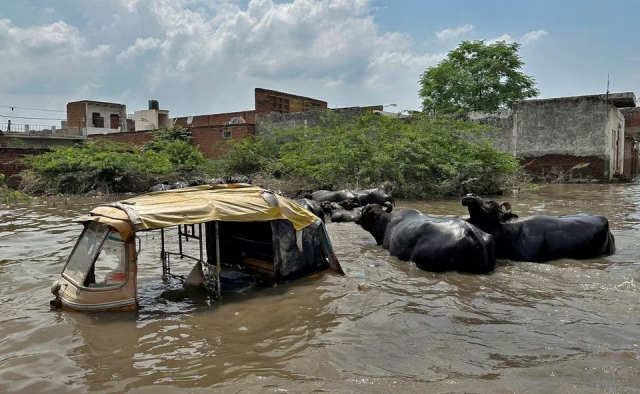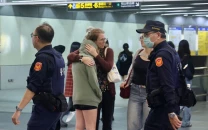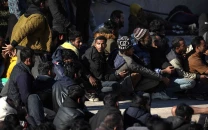Yamuna river floods India's holy cities of Mathura, Vrindavan after heavy rainfall
Footage from the cities show entire alleys inundated with waist deep water, with partially submerged vehicles

Many parts of India's ancient holy cities of Vrindavan and Mathura have been flooded by the swollen Yamuna river over the last few days, after heavy rainfall in northern India caused it to breach its banks.
On Wednesday morning, the portion of the river in Uttar Pradesh's Mathura district, where the cities are located, recorded water levels of 166.68 metres - the 'danger level' is 166 metres, according to local authorities.
Footage from the cities showed entire alleys inundated with waist deep water, with partially submerged vehicles, abandoned by their owners, standing like islands amid the deluge.
While thousands of residents have been evacuated to relief camps by the district administration or have moved to relatives' houses, some have found themselves trapped in their homes because of the muddy, still water that has been skimming their doorsteps this week.
Read more: India's Yamuna river laps walls of Taj Mahal after heavy rain
Vrindavan resident Shyam Singh, 57, was watching news about the floods on television when water started flowing into his neighbourhood.
"We couldn't get out. Water also came into our homes, causing a lot of damage to the structure and our belongings. Even the fodder of our cattle was destroyed," he said.
Although government officials say the water level is now reducing, the receding floodwater is leaving garbage and silt in its wake along with a strong stench, raising concerns about disease.
Officials from the district administration also acknowledged that they were concerned about the spread of contagious diseases.
"With this weather and the time of year we are in, there is a high chance of spread of contagious diseases, especially those related to gastro, skin diseases, and viral infections. This is where we have to be on guard now," said Pulkit Khare, the district magistrate of the area, who is also in charge of rescue and relief operations.



















COMMENTS
Comments are moderated and generally will be posted if they are on-topic and not abusive.
For more information, please see our Comments FAQ